Just how were the Trojan asteroids in orbit with Jupiter discovered? And how were they named? We take a look back at these objects as we get closer to the launch of the Lucy spacecraft. Plus, a cluster of galaxies, a meteoroid explosion at Jupiter, seafloor microbes, wildfires, and an interview with Fraser Cain, publisher of Universe Today and co-host of Astronomy Cast.
Media
Transcript
Hello and welcome to the Daily Space. I am your host Dr. Pamela Gay.
And I am your host Beth Johnson.
And we are here to put science in your brain.
Today is a jam-packed day. Not only do we have all that is new in space and astronomy, but we will also be joined later in the show by Fraser Cain, the publisher of Universe Today, to talk about the changing landscape of space news. For now, though, let’s jump out to look at a big galaxy in the Hubble Deep Field.

As we head into year two of pandemic lockdown, I for one know it’s time to buy new yoga pants in maybe a size larger. Let’s face it, sometimes things just grow, but before any of us should start to feel bad about our personal mass enhancements, we need to put everything in perspective: no matter how many random Oreos I may eat, my gains are insignificant compared to those of galaxies in the early universe.
Back in 1995, the Hubble Space Telescope pointed at what was believed to be one of the blankest regions of the sky for ten days. The goal was to see what faint objects might be out there, otherwise lost in the light of all the nearer or brighter objects. The answer was galaxies; this tiny field contains over 3000 galaxies, and one of those galaxies, HDF850.1, is a massive star-forming system 12.5 billion light-years away. This galaxy is putting out stars at a rate of a few hundred per year; this is the highest known star formation rate ever seen.
A new paper by Rosa Calvi and company in Monthly Notices of the Royal Astronomical Society looks at the environment around HDF850.1 and finds 23 observable companions in a complex structure around it. These systems are thought to be just the brightest members of a massive galaxy cluster forming in the early universe. Over time, these galaxies will interact and move together to form a cluster that, if we could see it as it appears today, would look something like the nearby Virgo Galaxy Cluster. Put another way, this massive system is so massive that it has gravitationally pulled in its neighbors while spitting out hundreds of stars a year.
I suddenly feel better about my personal growth over the last year.
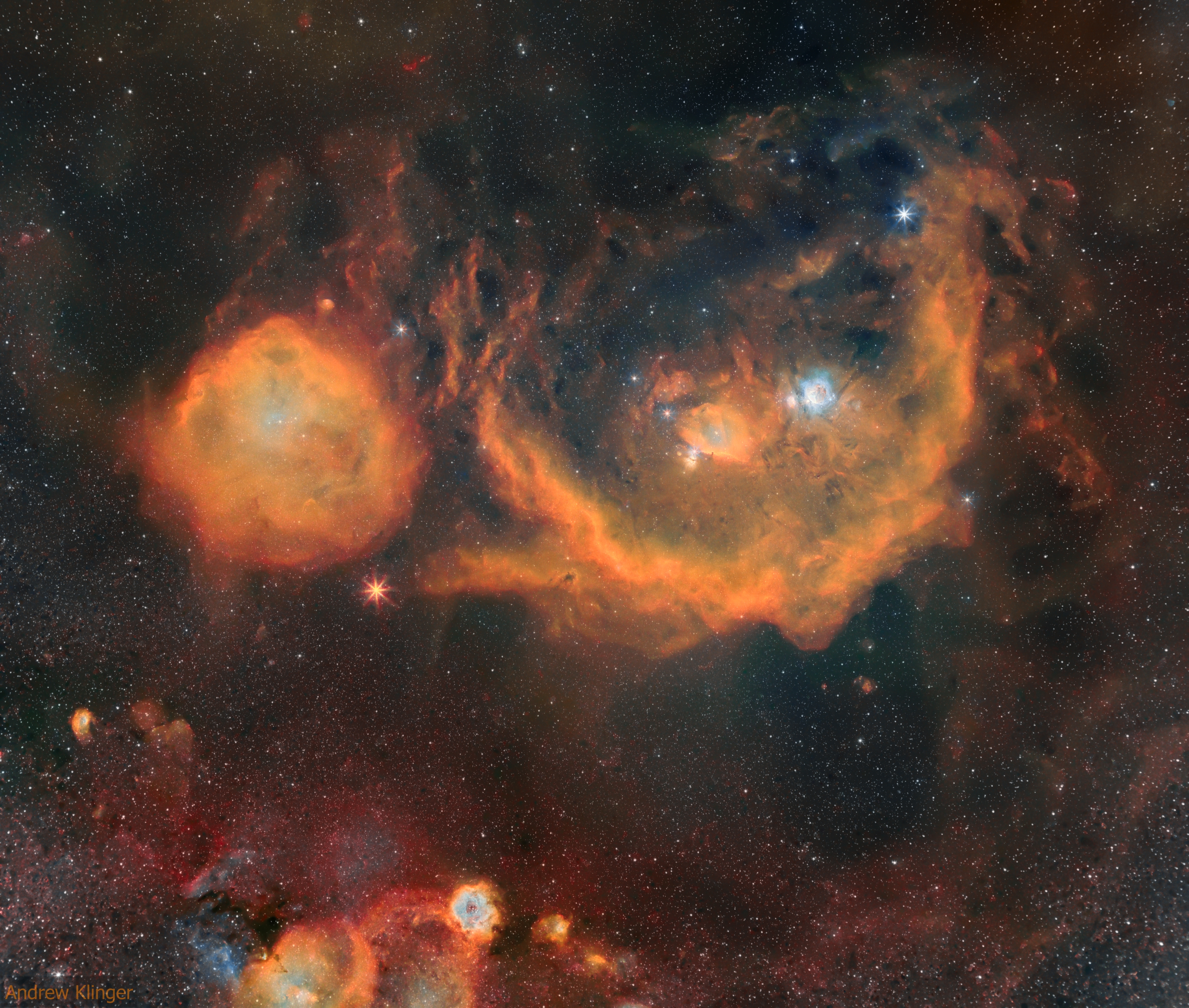
From massive galaxies, we now turn toward massive stars and an easy-sounding problem that has turned out to be quite hard. Also, this research article came with a really pretty picture we wanted to share. Long story short, researchers have been struggling to find ways to accurately measure the temperatures of red giant stars like Betelguese in a consistent manner. These stars have complex atmospheres that are highly variable, and many of the normal ways we have for measuring a star’s temperature don’t work so well with that chaotic atmosphere. We need to know stellar temperatures, however, to make sure our models describing how these stars live and die as violent supernovae are correct.
Iron has come to the rescue. This particular atom can be found in the outer parts of stars and is highly sensitive to temperature. Like all atoms, iron absorbs light at specific colors, and how much light it absorbs at each color depends on temperature. By comparing how much light is absorbed at different colors, researchers from the University of Tokyo have been able to accurately measure the temperatures of red giants and determine that theory and reality match nicely.
As for this stunning image, that red asterisk of light is the star Betelgeuse. Next time you look at the constellation Orion, know that the entire region is rich in these clouds of star formation, and the stars we see are just the brightest sampling of what’s out there.
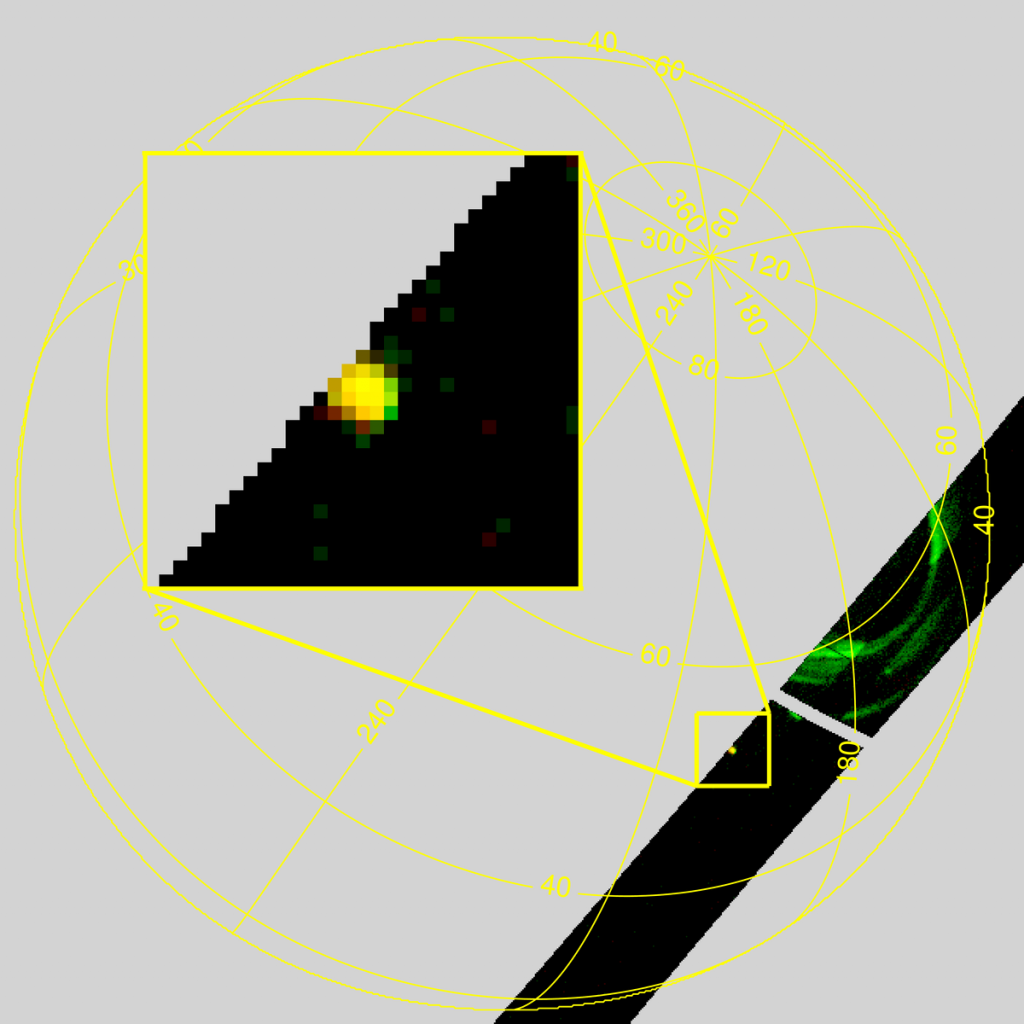
What we see with our eyes is just the faintest tracing of everything going on in the sky, and it’s often the accidental discoveries that are the most memorable. Recently, researchers using the Juno mission’s Ultraviolet Spectrograph were purposely observing aurorae around Jupiter when they accidentally observed a bright meteoroid explode in Jupiter’s atmosphere. The explosion took place about 140 miles above Jupiter’s cloud tops, and its brightness was consistent with an object between 550 and 3300 pounds. Basically, a car-sized rock exploded above Jupiter and was accidentally caught on camera in the process.
We used to think these kinds of events were rare, with the 1994 impact of Shoemaker-Levy 9 being the first broadly observed impact. We’re now learning they aren’t so much rare as generally brief, and unless you happen to be watching Jupiter at just the right moment, they tend to go unnoticed. Remarkably, most impacts are spotted by amateur astronomers. You never know exactly what you could discover by looking up.
And sometimes, you have to look down to understand what you might someday find when you look up. Researchers from the University of Rhode Island’s Graduate School of Oceanography have published a new paper in Nature Communications describing how life living beneath the seafloor can survive off chemicals released through radioactive reactions. Specifically, naturally occurring radiation can split water molecules into hydrogen and oxidants, and this process is much more effective in seafloor sediment than in open water.
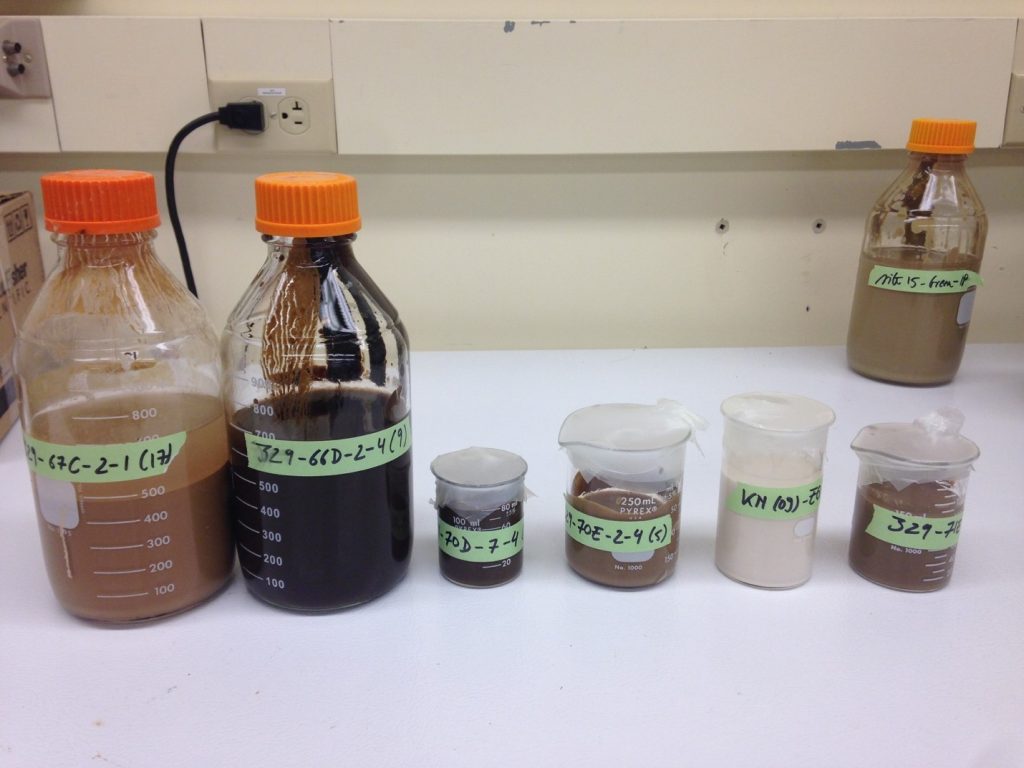
According to Steven D’Hondt, a co-author of this study: If you can support life in subsurface marine sediment and other subsurface environments from natural radioactive splitting of water, then maybe you can support life the same way in other worlds. Some of the same minerals are present on Mars, and as long as you have those wet catalytic minerals, you’re going to have this process. If you can catalyze production of radiolytic chemicals at high rates in the wet Martian subsurface, you could potentially sustain life at the same levels that it’s sustained in marine sediment.
As a reminder, marine sediment is extremely rich in microbial and other life, implying Mars could be rich in tiny lifeforms just waiting to be found.
Percy, we’re looking at you. Please go find fossils of past life that will let us know if we should go looking for current life.
Our next story is one for both the astrophotographers and the planetary scientists, but not for Pamela because I’m going to discuss a mission that hasn’t launched, yet. That mission is Lucy, which is a NASA Discovery Program mission to explore Trojan asteroids and a main-belt asteroid. It’s a twelve-year mission, and the launch window opens up on October 16 of this year.
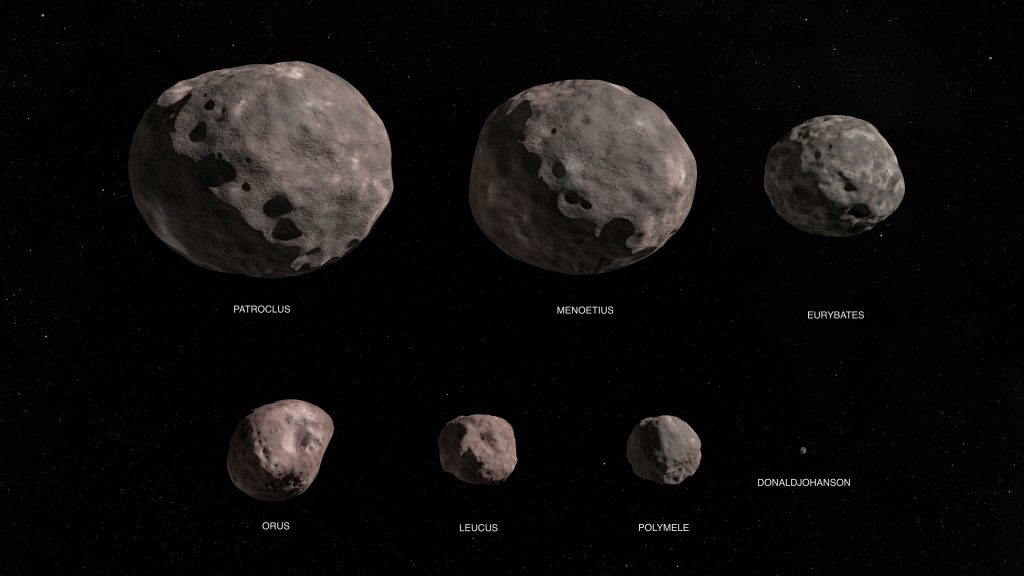
So what are the Trojan asteroids? How did we find them? Here is where astrophotography comes in.
In the late 1800s, German astrophotographer Max Wolf had already made a name for himself at the ripe old age of 21 by discovering his first comet. At 27, he decided to search for new asteroids using wide-field photography – the first person to attempt such a feat. Within two years, he had found eighteen new asteroids. After that, he became the first person to use a “stereo comparator”, which is like a View-Master, that helped make those asteroids more easily visible against the background of stars.
Then in 1906, Wolf found an asteroid with what appeared to be an unusual orbit – it remained ahead of Jupiter as Jupiter moved. Another German astronomer, Adolf Berberich, confirmed the discovery and noted that the asteroid’s orbit was about sixty degrees in front of Jupiter.

And here is where work by Joseph-Louis Lagrange comes in. I’m sure a lot of our regular viewers are familiar with Lagrange points, but let’s give a quick summation for those who are not. Lagrange was a mathematician who theorized that a small body, like an asteroid, could be caught in the same orbit as a planet if it ended up at one of two stable points in that orbit, what we now call the L4 and L5 Lagrange Points. Essentially, at sixty degrees ahead of or behind, the smaller body benefits from the combined gravitational forces of the planet and the Sun. If you could stand on Jupiter, these asteroids would look like they weren’t moving.
Up until Wolf’s discovery, Lagrange’s work was purely mathematical. Now, astronomers had photographic evidence.
Within a few months, two more of these Lagrange point asteroids had been discovered by other astronomers. And now that there were several, it was time to give them a name. Remember, astronomers like objects to fit into boxes, and then we name those boxes. Most of the asteroids in the main asteroid belt had been given the names of women from Roman and Greek mythology — think Ceres or Vesta — so Austrian astronomer Johann Palisa suggested these new Jupiter asteroids be called Achilles, Patroclus, and Hektor after characters in The Iliad. And so, a naming convention was born.
But not quite. Here’s where the story gets fun, and I’m going to quote a NASA article because it’s perfect.
As astronomers continued discovering asteroids hiding in Jupiter’s Lagrange points, they continued naming them after heroes of the Trojan War and began referring to them as “Trojan asteroids.” (“Trojan asteroids” would eventually refer to asteroids inhabiting any planet’s stable Lagrange points, though names from The Iliad are reserved for Jupiter’s Trojans.) It later became convention to name Jupiter’s L4 asteroids after Greek characters and Jupiter’s L5 asteroids after Trojan characters, so L4 and L5 became the “Greek camp” and the “Trojan camp” respectively. Palisa apparently did not foresee this tradition, for his naming of first three asteroids led to a Greek “spy” residing in the Trojan camp (Patroclus) and a confused Trojan (Hektor) who probably wandered into the Greek camp hoping to order some of their famous custom-built wooden horses.
These Trojan asteroids are thought to be the remnants of the material from which our outer planets formed. Some resemble icy bodies found in the Kuiper Belt, some resemble main-belt asteroids. All are thought to have an abundance of dark carbon compounds as well as an insulating blanket of dust that covers a wealth of water and other volatiles.
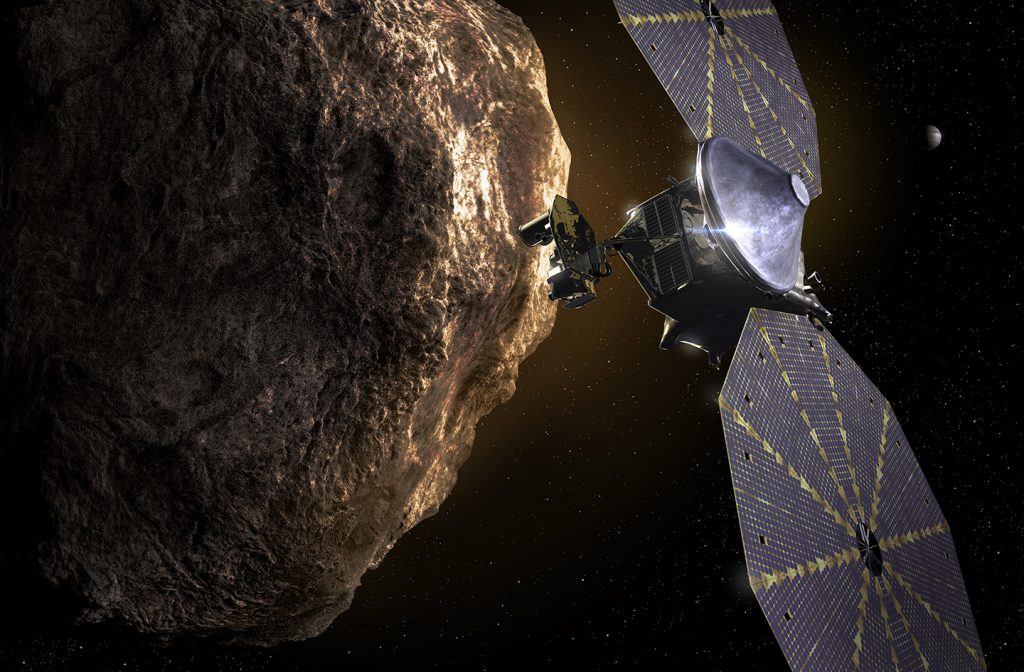
Now for the first time, we are sending a mission to study some of these Trojans, including Patroclus. The Lucy spacecraft is named for the skeleton of a human ancestor whose discovery led to breakthroughs in our understanding of human evolution. The spacecraft is expected to do the same for our understanding of planetary formation and evolution here in our solar system.
After Lucy’s launch, the craft will use boosts from Earth’s gravity to travel between the L4 and L5 Trojans, targeting seven asteroids in total, including one main-belt asteroid, Donalddjohnason [Ed. note: This asteroid is named for one of the co-discoverers of the Lucy fossils]. The initial mission will take twelve years to complete, and after that, Lucy will continue to cycle back and forth between the two points every six years. We’re excited about this launch, and we’ll keep you up-to-date on the timeline here on Daily Space.
Now let’s welcome Fraser Cain, the publisher of Universe Today and the long-time co-host of Astronomy Cast. Welcome, Fraser, and thanks for being here.
[Interview]
This has been the Daily Space.
Learn More
Largest Cluster of Galaxies in Early Universe Discovered
- IAC press release
- “Probing the existence of a rich galaxy overdensity at z = 5.2,” Rosa Calvi et al., 2021 January 5, Monthly Notices of the Royal Astronomical Society
Accurately Measuring Temperatures of Red Supergiants
- The University of Tokyo press release
- “Effective temperatures of red supergiants estimated from line-depth ratios of iron lines in the YJ bands, 0.97-1.32μm,” Daisuke Taniguchi et al., 2021 February 28, Monthly Notices of the Royal Astronomical Society
An Accidental Image of a Meteoroid Explosion at Jupiter
- SwRI press release
- “Detection of a Bolide in Jupiter’s Atmosphere With Juno UVS,” Rohini S. Giles et al., 2021 February 9, Geophysical Research Letters
Microbes Beneath Seafloor Survive on Radioactivity
- The University of Rhode Island press release
- “The contribution of water radiolysis to marine sedimentary life,” Justine F. Sauvage et al., 2021 February 26, Nature Communications
Trojan Asteroids: Understanding the Past to Explore the Future
Credits
Written by Pamela Gay and Beth Johnson
Hosted by Pamela Gay and Beth Johnson
Audio and Video Editing by Ally Pelphrey
Content Editing by Beth Johnson
Intro and Outro music by Kevin MacLeod, https://incompetech.com/music/


 We record most shows live, on Twitch. Follow us today to get alerts when we go live.
We record most shows live, on Twitch. Follow us today to get alerts when we go live.